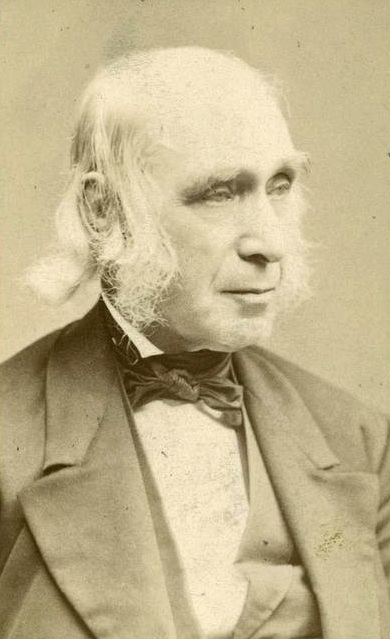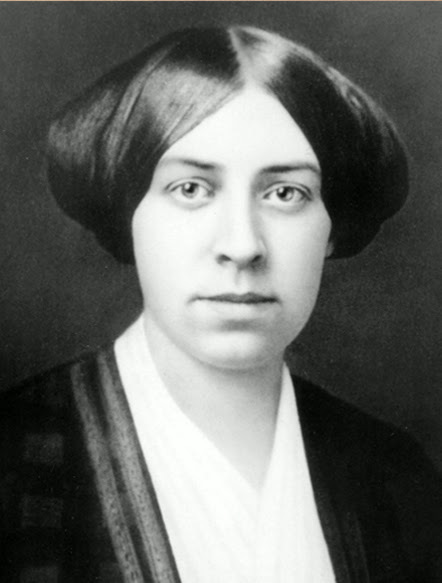The Real-Life Characters of “Little Women”
Jo March was practically an alter ego for Louisa May Alcott. Other Little Women characters bore close resemblances to other Alcotts.

MR. MARCH
Bronson Alcott
Born November 29, 1799 (33 years before Louisa’s birthday on the same date), in Wolcott, Connecticut, Amos Bronson Alcott gained celebrity in his day as a progressive philosopher and teacher who embraced transcendentalism and often entertained the icons of the movement in his study. His intellectual pursuits, as noble as they might have been, created hardships for his family—he traveled extensively, often leaving his wife and daughters to scrape by financially. His legacy as an educator, however, is important. He encouraged students to ask questions of their instructors and to engage in hands-on learning by interacting with the natural world; he also was strongly opposed to corporal punishment. He died in Boston on March 4, 1888.

MARMEE
Abigail “Abba” May Alcott
In Little Women, the March sisters idolize their mother as an unending source of encouragement, love, and support, and Abba inspired the same devotion among her four daughters. (She gave Louisa her first fountain pen on her 14th birthday, encouraging her to write “to obtain self-possession and purpose.”) Abba was a vocal proponent of equal rights for women, the abolition of slavery, and temperance, and she devoted herself to bettering the circumstances of others, becoming one of the first paid social workers in the state of Massachusetts in 1848. She died November 25, 1877, prompting Louisa to write in her journal, “I never wish her back, but a great warmth seems gone out of life … She was so loyal, tender, and true, life was hard for her and no one knew all she had to bear but her children.”

MEG
Anna Alcott Pratt
The eldest of the Alcott sisters, Anna was born March 16, 1831, and like her fictional counterpart, initially harbored dreams of a life on the stage; together she and Louisa were founding members of the Concord Dramatic Union in 1858. Also like Meg, Anna worked as a governess before falling in love—in Anna’s case with John Bridge Pratt, also a member of the acting troupe. They married in 1860. Louisa was disappointed with the news of their engagement, writing in her journal: “I moaned in private over my great loss, and said I’d never forgive J. for taking Anna from me; but I shall if he makes her happy, and turn to little May for comfort.” The couple, who had two sons, Frederick and John Jr., were happy together until John’s untimely demise in 1870. With earnings from her writing, Louisa helped Anna purchase the Thoreau House on Main Street in Concord, where Anna lived until her death on July 17, 1893.
BETH
Elizabeth “Lizzie” Alcott
Of Louisa’s sisters, the least is known about Lizzie, who, like Beth, died after contracting scarlet fever months before the Alcotts moved into Orchard House in 1858. What’s clear is that her illness took a toll. “A 22-year-old whose disease had wasted her body so that she looked like a middle-aged woman, she lashed out at her family and her fate with an anger that she had never before expressed,” Susan Cheever wrote in Louisa May Alcott: A Personal Biography. At Lizzie’s burial in Concord’s Sleepy Hollow Cemetery, Thoreau and Emerson served as pallbearers. “Emerson told the officiating minister, who did not know the family well, that Lizzie was a good, unselfish, patient child, who made friends even in death,” John Matteson wrote in Eden’s Outcasts: The Story of Louisa May Alcott and Her Father. “Everyone seemed to forget that they were not burying a child but a woman of 22.”
AMY
Abigail May Alcott Nieriker
In Little Women, Jo’s youngest sister, Amy, aspires to be a great painter; in reality, Louisa’s youngest sister, known as May, became a noted visual artist who studied in Boston and in Europe and befriended Impressionist painter Mary Cassatt. “She is a fortunate girl, and always finds some one to help her as she wants to be helped,” Louisa wrote in her journal in 1864. In 1877, the Paris Salon accepted one of May’s still life paintings. She also wrote a book—Studying Art Abroad, and How to Do It Cheaply, offering advice to women who wanted to follow in her footsteps. It was published in 1879, the same year May married Swiss businessman Ernest Nieriker. May died on December 29, 1879, at the age of 39, after giving birth to Louisa May “Lulu” Nieriker. Louisa, then 48, adopted Lulu and brought her home from France to be raised in Massachusetts in accordance with her sister’s wishes.
THEODORE “LAURIE” LAURENCE
Alfred Whitman and Ladislas Wisniewski
Alcott once wrote in her journal, “Laurie is not an American boy, though every lad I ever knew claims the character.” Instead, Alcott says Laurie, Jo’s best friend, soul mate, and would-be suitor, was inspired by Ladislas Wisniewski, a young Polish man she met in Switzerland during a vacation to Europe with Boston socialite Anna Weld. Yet experts also believe that Alcott drew certain aspects of Laurie’s character from Alfred “Alf” Whitman (above), a fellow member of the Concord Dramatic Union. “She wrote him and said ‘You and Laddie,’ as she called Wisniewski, ‘jointly are Laurie,’” says Alcott scholar Daniel Shealy. “But you get people like [Nathaniel Hawthorne’s son] Julian Hawthorne, who claims that Laurie was based on him … Julian Hawthorne would claim a lot of things.”
